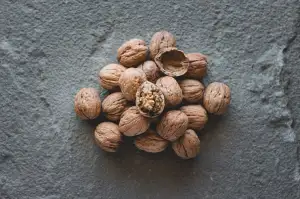Discover the Best Gluten-Free Flour Options for a Healthier Lifestyle

Gluten-free flour has gained popularity in recent years as more people are embracing a gluten-free lifestyle for various health reasons. Whether you have celiac disease, a gluten intolerance, or simply want to reduce your gluten intake, using gluten-free flour is a great alternative. In this article, we will explore the benefits of using gluten-free flour, the different types available, and provide tips on how to bake with it successfully. So let's dive in and discover the best gluten-free flour options for a healthier lifestyle!
Understanding Gluten and its Impact on Health
Gluten is a protein found in wheat, barley, and rye. For individuals with celiac disease or gluten sensitivity, consuming gluten can lead to various health issues. Celiac disease is an autoimmune disorder where the body's immune system attacks the small intestine when gluten is ingested. This can cause damage to the lining of the intestine, leading to malabsorption of nutrients and other digestive problems.
Even for those without celiac disease or gluten sensitivity, gluten can still have negative effects on health. It has been linked to inflammation in the gut, which can contribute to digestive disorders such as irritable bowel syndrome (IBS). Some studies have also suggested a connection between gluten consumption and conditions like arthritis and migraines.
By understanding the impact of gluten on health, individuals can make informed choices about their diet and consider incorporating gluten-free flour options into their cooking and baking routines.
Benefits of Using Gluten-Free Flour
Using gluten-free flour in your cooking and baking can offer a multitude of benefits for your health. Firstly, it allows those who have celiac disease or gluten sensitivity to enjoy a wide variety of delicious foods without experiencing any adverse reactions. Secondly, gluten-free flour is often higher in fiber and protein compared to traditional wheat flour, making it a healthier choice for everyone. Additionally, using gluten-free flour can help improve digestion and promote better gut health. Lastly, incorporating gluten-free flour into your diet can lead to increased energy levels and overall well-being. So why not make the switch and reap the numerous benefits of using gluten-free flour in your everyday cooking?
Types of Gluten-Free Flour Available
When it comes to gluten-free flour options, there are several choices available in the market today. One of the most popular options is almond flour, which is made from finely ground almonds. It has a slightly sweet and nutty flavor, making it perfect for baking cookies and cakes.
Another option is coconut flour, which is made from dried coconut meat. It has a light and airy texture and adds a subtle coconut flavor to baked goods. Coconut flour is also high in fiber and low in carbohydrates, making it a healthier choice.
For those looking for a versatile gluten-free flour, rice flour is a great option. It can be used in a variety of recipes, including bread, pancakes, and muffins. Rice flour is made from finely milled rice grains and has a mild taste that doesn't overpower other flavors.
Quinoa flour is another excellent choice for gluten-free baking. It is made from ground quinoa seeds and has a slightly earthy flavor. Quinoa flour is packed with protein and essential amino acids, making it a nutritious option.
Lastly, tapioca flour is often used as a thickening agent in gluten-free recipes. It is made from the starchy root of the cassava plant and has a neutral taste. Tapioca flour gives baked goods a chewy texture and can also be used to make delicious homemade pasta.
These are just some of the many types of gluten-free flours available on the market today. Each one offers its own unique taste and texture, allowing you to experiment with different flavors in your favorite recipes while still maintaining a gluten-free lifestyle.
Nutritional Value of Gluten-Free Flour
Gluten-free flour options offer a range of nutritional benefits that can enhance a healthier lifestyle. These flours are typically made from alternative grains such as rice, quinoa, almond, or coconut. They are rich in essential vitamins and minerals like iron, magnesium, and B vitamins. Additionally, gluten-free flours often contain higher amounts of fiber and protein compared to traditional wheat flour. This makes them a great choice for individuals looking to increase their nutrient intake while avoiding gluten. Incorporating gluten-free flours into your diet can provide you with the necessary nutrients for optimal health and well-being.
Tips for Baking with Gluten-Free Flour
When baking with gluten-free flour, it's important to keep a few tips in mind to achieve the best results. Firstly, it's crucial to measure the flour accurately using a kitchen scale as different gluten-free flours have varying densities. Secondly, adding xanthan gum or guar gum can help improve the texture and binding properties of gluten-free baked goods. Additionally, it's recommended to use a combination of gluten-free flours to create a more balanced flavor and texture. Lastly, be mindful of the baking time and temperature as gluten-free baked goods tend to cook faster and may require lower temperatures. By following these tips, you can enjoy delicious and successful gluten-free baking at home.
Substituting Gluten-Free Flour in Recipes
Substituting gluten-free flour in recipes can be a bit tricky, but with the right knowledge, you can create delicious dishes without sacrificing taste or texture. When substituting gluten-free flour for regular flour, it's important to consider the different properties of each type of flour. Gluten-free flours tend to be denser and have less elasticity than traditional flours. To achieve the best results, it's recommended to use a blend of gluten-free flours, such as a combination of rice flour, tapioca flour, and potato starch. Experimenting with different ratios will help you find the perfect balance for your recipes. Additionally, adding xanthan gum or guar gum can help improve the texture and binding properties of gluten-free baked goods. Keep in mind that gluten-free flours may absorb more liquid than regular flours, so adjusting the amount of liquid in your recipe might be necessary. Don't be discouraged if your first attempt doesn't turn out exactly as expected – practice makes perfect! With time and experimentation, you'll become more comfortable substituting gluten-free flour in your favorite recipes.
Common Misconceptions about Gluten-Free Flour
There are several misconceptions surrounding gluten-free flour that can lead to confusion. One common misconception is that gluten-free flour is tasteless and has a strange texture. However, with the right combination of ingredients and proper baking techniques, gluten-free flour can produce delicious and satisfying results.
Another misconception is that gluten-free flour is only suitable for those with celiac disease or gluten intolerance. In reality, anyone can benefit from using gluten-free flour as part of a healthy diet. It can help reduce inflammation, improve digestion, and provide a wide range of nutrients.
Some people also believe that gluten-free flour cannot be used in traditional recipes or that it requires complicated adjustments. While it may require some experimentation and recipe modifications, there are plenty of resources available to guide you through the process. With practice, you can easily substitute gluten-free flour in your favorite recipes without sacrificing taste or texture.
In conclusion, it's important to dispel these misconceptions about gluten-free flour. It offers a variety of benefits for everyone, not just those with specific dietary restrictions. By understanding its nutritional value and learning how to use it effectively in baking, you can embrace a gluten-free lifestyle for better health without compromising on flavor or enjoyment.
In conclusion, embracing a gluten-free lifestyle can have numerous benefits for your health. By eliminating gluten from your diet and using gluten-free flour options, you can reduce inflammation, improve digestion, and manage symptoms of gluten sensitivity or intolerance. Not only does gluten-free flour provide a healthier alternative for those with celiac disease or gluten-related disorders, but it also offers a wide range of nutritional value. With the variety of gluten-free flours available, you can still enjoy delicious baked goods and meals without sacrificing taste or texture. So why not give it a try and discover the wonders of gluten-free cooking? Your body will thank you for it!
Published: 09. 12. 2023
Category: Health



